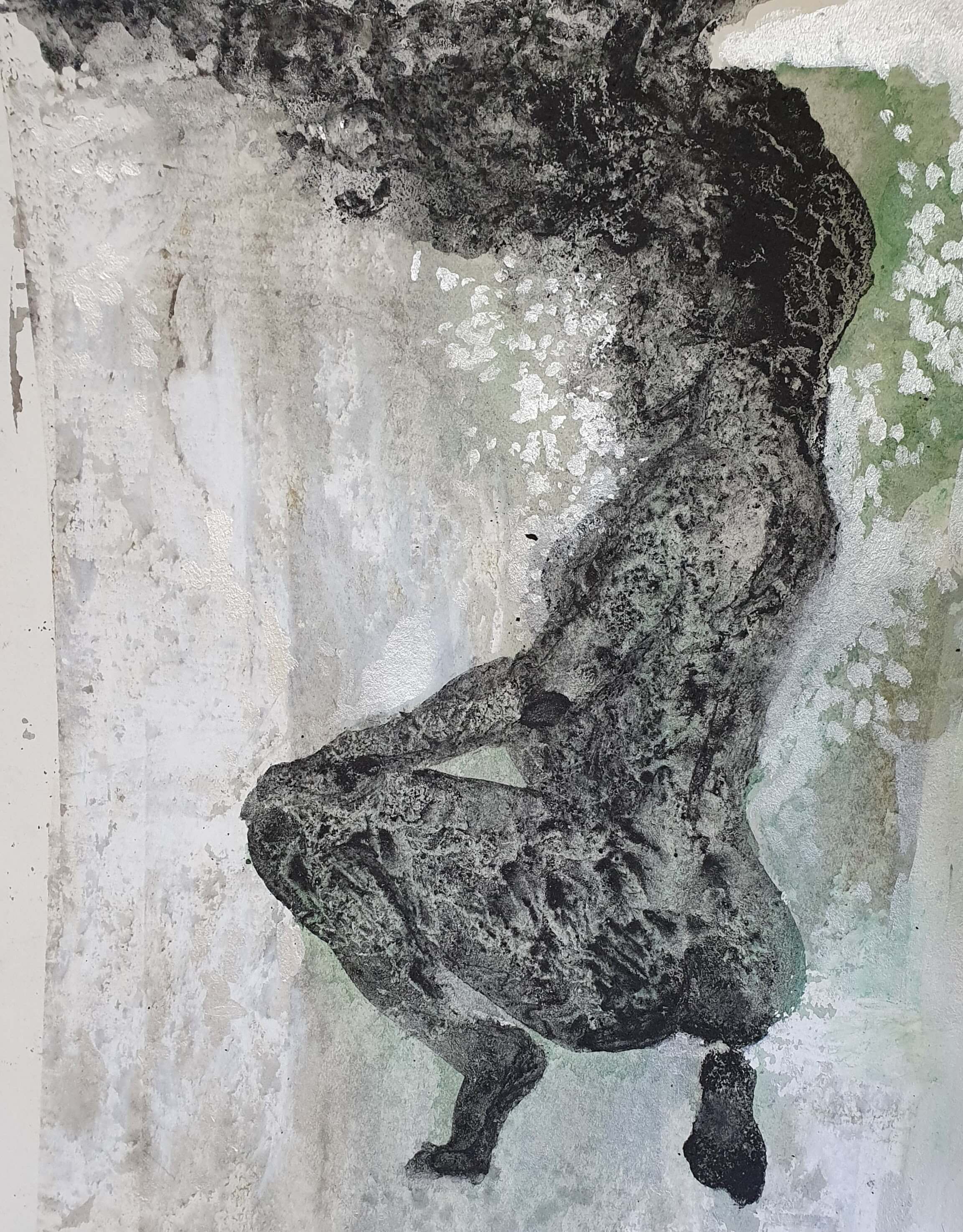Atsuko Barouh, Striptease and a Feminist Utopia
In the series 'Pole Dancer', the Japanese artist depicts liberated women who proudly display their sensuality.

© Atsuko Barouh
In Shintoism, Amaterasu is the goddess of the Sun. After a dispute with her brother, she shut herself away in a cave and plunged the world into darkness. The other deities decided to hold a banquet facing the cave, during which the goddess Ame no Uzume started to dance, going so far as to perform what could be described as a striptease. The noise and excitement it caused led Amaterasu to move the rock slightly, enabling a man to push it away and allow the goddess to come out.
Atsuko Barouh, a Japanese artist who lives in London, uses this tale to illustrate the reflections that gave rise to her series Pole Dancer – Strength in Revealing Weakness. Yes, a striptease artist saved the world. What do we take from this fact? It was in autumn 2019, when the artist started frequenting a club in Shoreditch and saw that these women seemed to be thriving, that she decided to reflect on the question and delve deeper into the subject.
The ‘liberation and danger of sexuality’
‘Why are these pretty and healthy young athletes opening their legs wide, even showing their arseholes? What kind of traumatic experiences did they go through? What kind of unhappy childhoods did they have?’ These were the questions posed by the artist as she watched the dancers at the club.
In a society still dominated by men and where female nudity is immediately sexualised, such nudity has the ‘power to captivate people. But this, on the other hand, also makes women weak, as there is a need to be able to protect themselves from unwanted people drawn to them. The more you hide, the more men want to expose. So when you open up and expose all, like a stripper, the power is maximised’, Atsuko Barouh continues in the text accompanying the series.
Through her brush strokes, the artist depicts female forms, proud, remaining defiant in the face of the risks of sexual violence that inhibit and restrict women’s lives. Here, the dancers perform in a setting they have chosen, they enjoy themselves and are free. ‘I have depicted the liberation and danger of sexuality that play out in such a place’, the artist continues. However, ‘such a sense of freedom only lasts for a short moment. It is a freedom made possible through a balancing out of powers that exist within a particular place under an agreement where physical contact is forbidden.’
Pole Dancer – Strength in Revealing Weakness (2019), a series by Atsuko Barouh, can be viewed on the artist’s website.

© Atsuko Barouh

© Atsuko Barouh

© Atsuko Barouh

© Atsuko Barouh
TRENDING
-
The Tattoos that Marked the Criminals of the Edo Period
Traditional tattoos were strong signifiers; murderers had head tattoos, while theft might result in an arm tattoo.

-
‘Shojo Tsubaki’, A Freakshow
Underground manga artist Suehiro Maruo’s infamous masterpiece canonised a historical fascination towards the erotic-grotesque genre.

-
The Story of Sada Yacco, the Geisha who Bewitched Europe
Described by Dazed magazine as the first beauty influencer, she has been restored to her former glory since 2019.

-
Ito Jakuchu's Naturalist Paintings
From 15 September until 14 October 2018, the Petit Palais showcased the artist's iconic ‘Images of the Colourful Realm of Living Beings’.

-
Chiharu Shiota, Red Threads of the Soul
Last year, more than 660,000 people visited the retrospective 'Chiharu Shiota: The Soul Trembles' exhibit at the Mori Art Museum.





